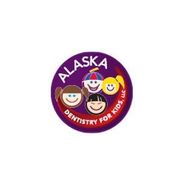Is Sedation Dentistry Safe for Your Child?

Sedation dentistry keeps patients calm or asleep during appointments; in pediatric dental care, it allows your children’s dentist to work without disruptions or patient movement. If your child needs fillings or another procedure, sedation will provide a positive experience—but it’s natural to have questions about the medication before you decide if it’s right for your family. Here is a brief guide to sedation dental care and its effectiveness with children.
What Are the Potential Risks?
Different levels of sedation medication create varying results. If your child receives sedation before a filling or because they feel anxious, the dentist will likely administer a minimal dose. Your child will still be able to respond to verbal commands and touch. Minimal sedation is routinely administered and extremely low-risk.
In situations that are more invasive, like surgery, the dentist might need to administer enough sedative to keep the patient asleep. With deep sedation levels and general anesthesia, the patient will have an oxygen mask to help them breathe normally. Vitals will be monitored closely throughout the procedure, because it’s possible for respiratory and cardiovascular function to diminish. If this occurs, the medical staff will have the equipment needed to respond appropriately.
Any medication has the potential to trigger an allergic reaction. However, sedation medications are unlikely to cause a reaction—commonly prescribed antibiotics like penicillin pose a greater risk when it comes to drug allergies. If your child starts to exhibit signs of an allergic response, the dentist can administer epinephrine, which is effective for treating severe allergies.
Your dentist will discuss your child’s personal and family history to evaluate any risks. They’ll also describe what level of sedation they’ll use and what you should expect from the treatment.
Is Sedation Dentistry Safe for Children?
 Sedation during dental care has some risks, but when performed by an experienced dentist, it’s safe for children. If you’re considering light sedation during a filling, for example, or to soothe your child’s anxiety, your child could experience some mild drowsiness. Otherwise, they probably won’t notice any other side-effects. In these situations, mild sedation can make the whole process easier and more relaxing, and it also will help your child feel more comfortable about receiving dental care in the future.
Sedation during dental care has some risks, but when performed by an experienced dentist, it’s safe for children. If you’re considering light sedation during a filling, for example, or to soothe your child’s anxiety, your child could experience some mild drowsiness. Otherwise, they probably won’t notice any other side-effects. In these situations, mild sedation can make the whole process easier and more relaxing, and it also will help your child feel more comfortable about receiving dental care in the future.
Alaska Dentistry for Kids in Anchorage provides sedation dentistry in a safe and advanced facility, ensuring superior dental care. They also invite parents to stay in the room with their children during the appointment, which can help children feel more comfortable and relaxed. Because of their kid-oriented facility and high-quality care, the compassionate clinic was voted Alaska’s best children’s dental practice in 2018. Learn more about their sedation practices online, and call (907) 274-2525 to schedule your child’s appointment today.
About the Business
Have a question? Ask the experts!
Send your question

